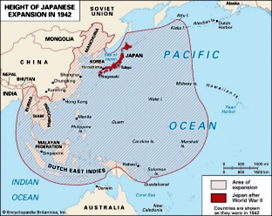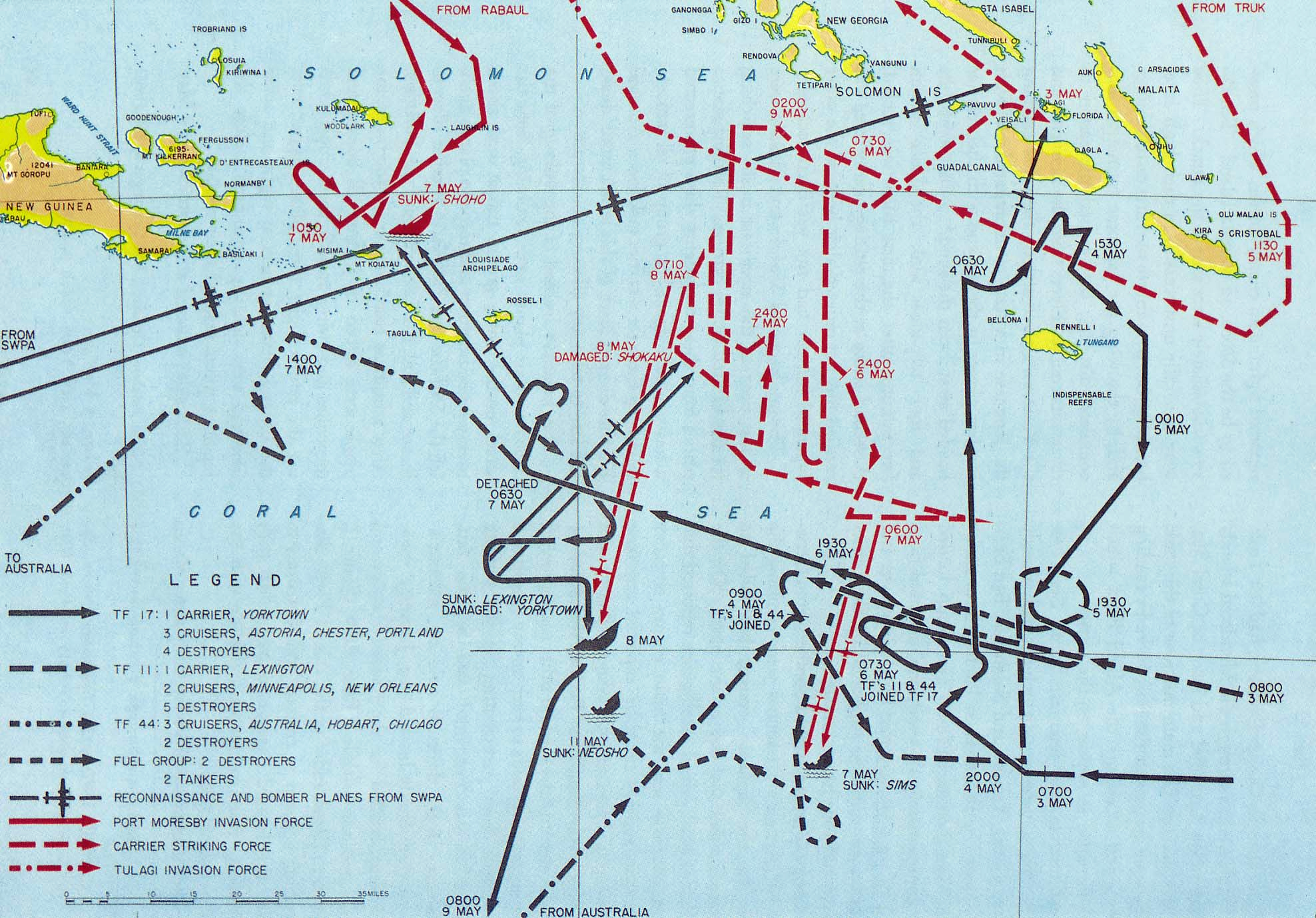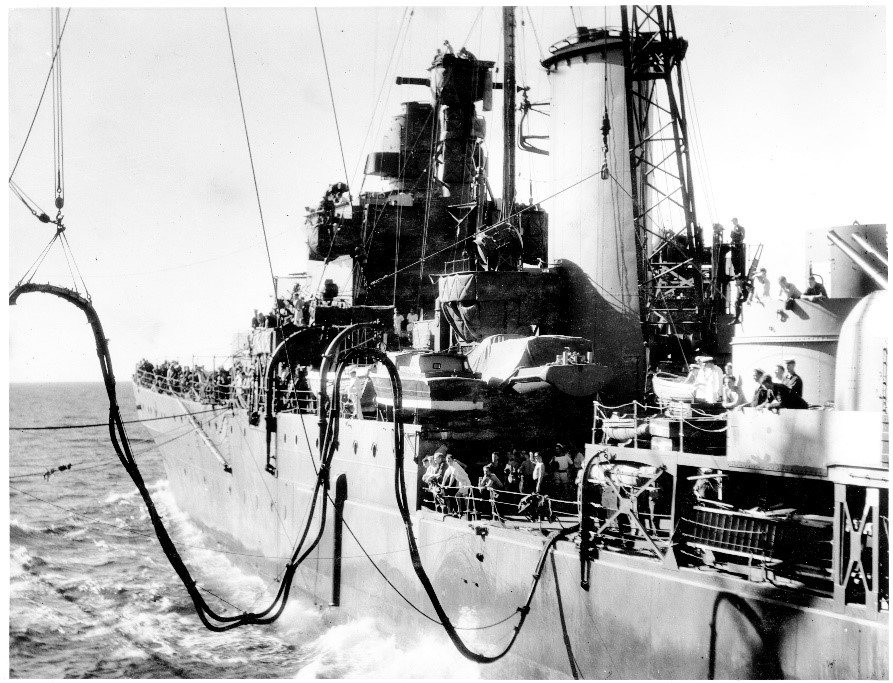The Battle of the Coral Sea which occurred off the north east coast of Australia in early May 1942 is of great importance for Australians who should understand the associated naval actions and its strategic consequences. Whilst most Australians are well aware of actions on the Kokoda Track a lesser number are aware of this sea battle, the strategic situation prior to the battle and the consequences of this battle. For example, with a direct sea assault on Port Moresby thwarted by the Coral Sea Battle the Japanese alternative was an attempt to reach Port Moresby by land from Kokoda and Milne Bay.
Since the bombing of Pearl Harbour on 7 December 1941 the Japanese armed forces had by early 1942 conquered or controlled much of Asia and the Pacific Islands. The area taken under control during the offensive exceeded 20 million square miles of territory. At its peak Japanese occupied territory including the Philippines, the Dutch East Indies (Indonesia), Indochina (Vietnam, Laos and Cambodia), Malaya, Thailand (as an ally), Burma, northern New Guinea, the Solomon Islands and a number of Pacific islands. In the South-West Pacific Area outposts were held at Lae and Salamaua in northern New Guinea.

The next Japanese target was the airfield in Port Moresby which would enable the opening of additional SW Pacific islands for further air bases, thereby enabling them to isolate Australia with the possibility of invasion if desired. Implementation of this plan involved an Invasion Fleet and accompanying Carrier task force entering the Coral Sea. However, the Japanese carrier force was intercepted by Allied – predominately US maritime forces. The ensuing Battle of the Coral Sea was significant because:
- It was the first time the Japanese armed forces had been checked in their drive South.
- The invasion fleet reversed course and there was no further sea-born attack on Port Moresby.
- Japanese plans to invade Fiji and other SW Pacific Islands were abandoned.
- While Australia was subjected to air and submarine attacks, all credible threat of a Japanese invasion ceased.
- The Japanese then attempted to reach Port Moresby by land, via Kokoda and Milne Bay, suffering eventual defeat in both areas.
- It was the first fleet action where aircraft carriers engaged each other, but none of the opposing vessels ever sighted or fired directly on each other
- It was considered a strategic victory for the Allies because it thwarted Japanese plans to occupy Port Moresby by sea, which would have severely disrupted communication between Australia and the US and made it easier for Japanese aircraft to attack targets in northeast Australia, and
- Although it was considered a tactical victory for Japan as the Allies lost more ships, including the fleet carrier USS Lexington, the damaged sustained by Japanese carriers Zuikaku and Shokaku prevented those ships from participating in the decisive Battle of Midway in June 1942.
The Japanese invasion force was to be covered by a force built around the large carriers Shokaku and Zuikaku. The Japanese plans were uncovered by signals intelligence and the Allies countered with a force built around the carriers Yorktown and Lexington. Included in this force were the heavy cruiser HMAS Australia (II) and the light cruiser HMAS Hobart (I), both of which were attacked by Japanese aircraft on 7 May, without damage.


Further Reading
Naval Historical Society of Australia, The Battle of the Coral Sea – May 4-8,1942, Naval Historical Review published August 1972, available at https://navyhistory.au/the-battle-of-the-coral-sea-may-4-81942/
Sea Power Centre-Australia, Feature History, available at https://www.navy.gov.au/history/feature-histories/battle-coral-sea
Australian War Memorial: Battle of the Coral Sea, 4-8 May 1942, available at https://www.awm.gov.au/articles/encyclopedia/coral_sea/doc




